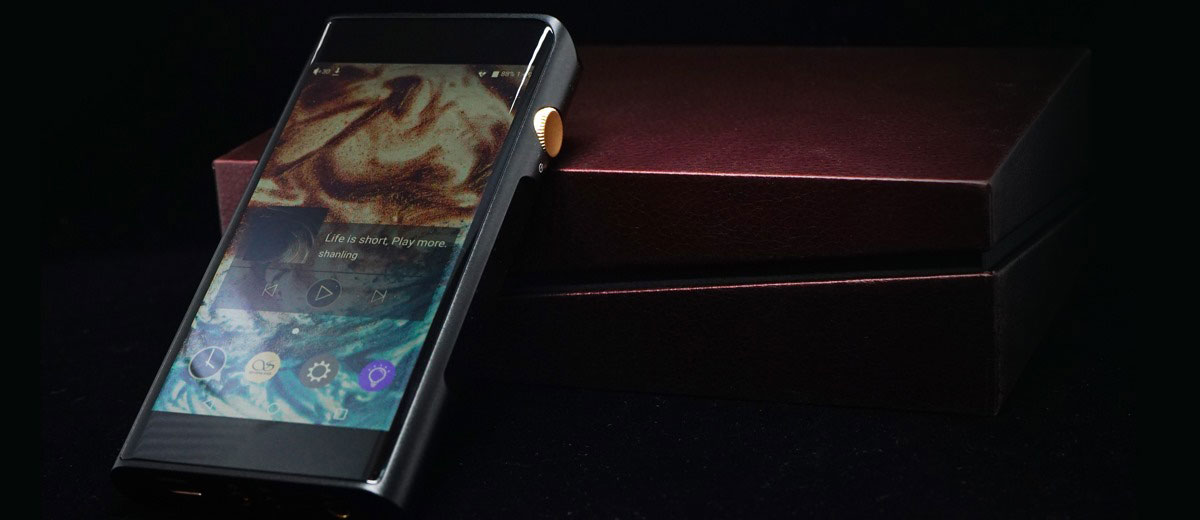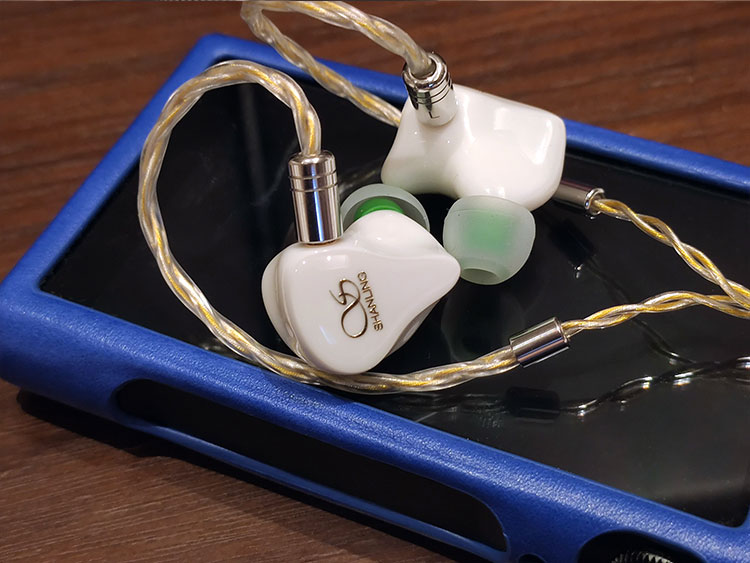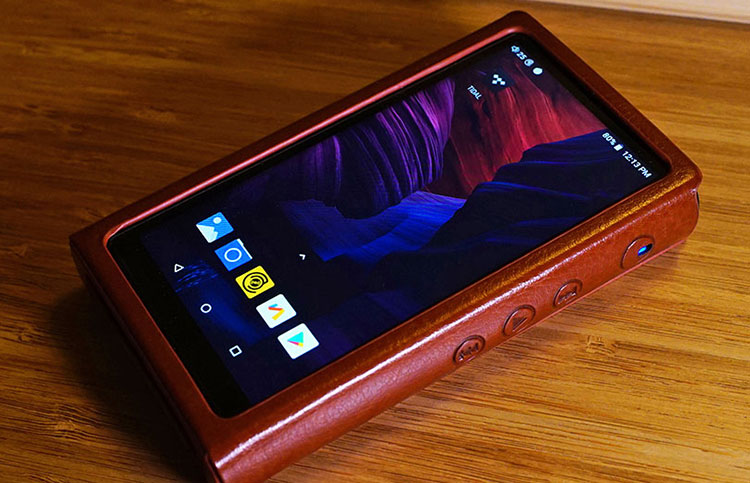Sound Impressions
Summary
With the M3X we reviewed previously this is not the first time we have seen Shanling use ESS DACs inside their DAPs. That should be a bit of a hint as to what direction the tuning will take on this new M6 version. The performance to me on the M6 Version 21 is technically quite a step forward albeit the price is closer to the original M6.
Having the ES9038 on the new M6 Version 21 is quite a refreshing change that nicely blends its strong output power and Shanling’s house sound. The soothing, comfortable mid-bass response from M6 is still in the blood of the M6 Version 21 but this time adding more detail retrieval as well as better dynamic and energy.
Staging is also slightly more expanded with more abundant energy in the output. Some IEMs now sound more expansive with a balanced tuning as well as additional resolution.
You will be hearing a lot more micro detail with better low-end layering and extended treble than the original M6, whilst the vocal performance is still nicely handled and is “sweetened” in the timbre.
Shanling also adds a mid-gain option, so if you are using sensitive IEMs like the SE846 or the Andromeda 2020 there are enough steps of volume for you to finely adjust. Also, there is no hissing detected in the background at all which will please very sensitive ears.
Timbre
The M6 Version 21 punches firm and fast in the bass. It sounds clearly defined, controlled in the mids, and nicely extended in the treble. Also, the performance offers a lot more dynamics than the more mids-elaborative M6.
The older M6 sounds more rounded in the upper register and not as light and clean in the mids, this makes it more of a hit and miss with different genres.
In contrast, the new M6 Version 21 is much more realistic sounding as well as more textured, the tuning is swift and well-articulated. The vocal that is positioned a few steps away reminds me of the M8, which has a similarly smooth, effortless tuning.
The superior control and enhanced balance make the M6 Version 21 more capable of handling music that has a higher dynamic range, let’s say fast-paced electronic music that needs agility in bass and treble extension.
This is more obvious when you stream with YouTube where the old M6 may sound less resolving, especially with darker voices, sometimes bleeding to the lows and overlays the bass details.
When it comes to flutes and violins, or other jazz instruments, the treble on the original M6 isn’t as energetic as the new M6 Version 21. With more elements in the mix, you can feel the original M6 struggling. The M6 Version 21 is much more capable of defining instruments from each other, giving a clearer picture of the whole band.
Staging
As aforementioned the M6 Version 21 has its vocal positioning more defined but also more neutral, which helps it to render a more open stage. The vocal imaging is more 3D than the original M6 and you can pick up on the better layering on the low-end.
It does not resolve as accurately as the M6 Pro or the M8 but with some well-mastered tracks, it is getting quite close when listening outdoors.
With more music tested I found out that the M6 Version 21 works best for pop, synthesized instruments, operas, chamber music but less so with larger ensembles or orchestral music.
A gentle roll-off is detected in the treble following some boost in the higher mids to keep all voices rounded, and the trade-off is that the staging is limited, yet not confined.
The classroom-sized staging holds together very well with clean imaging, sweet vocal, good air, and treble power also decent accuracy in positioning. It does not feel exaggerated or overly enlarged.
Synergy
With a good tonal balance, the tuning on M6 Version 21 is friendly to many IEMs not unlike the recently reviewed M3X. The higher power and level of control give it more advantages to handle very sensitive in-ear monitors.
The low impedance in the output with the likes of the Shure SE846 works nicely astounding vibrant. It also has enough swing to drive more current demanding hybrids like the Earsonics STARK quite well.
There is still room to improve with the slightly confined staging quality. However, the slightly loosened up bass sound quite relaxing when listening outdoors.
Throwing in other IEMs such as the Final B Series and the etymotic ER4B, the M6 Version 21 handles them quite well and is quite loyal to the original tuning on the IEMs with a bit of warmth added.
The performance is great with more sensitive IEMs or multi-BA/hybrids with fewer driver counts. Unless your IEMs are very mid-centric, the M6 Version 21’s tuning on board is just right for sweet, well-controlled vocals and good openness.
Surprisingly, the 3.5mm end performs quite nicely too, but the Balanced connection is still audibly superior in power, clarity, and imaging so I would recommend using the 4.4mm where possible.
Pairings
Shanling ME700 Lite
Putting on the ME700 Lite, the bass is quite fast, energized, and layered but not very deep punching. You will still hear some coloration in the mid-bass that polishes the mids timbre and vocal sweetly.
There is enough control to let the treble sounds clean and bright but not overly hot. On the other hand, there is good separation and width in the stage to render quite an expanded stage. It is not huge but you won’t feel boxed or plainly layered.
The M6 Version 21 somehow feels like a more powerful and polished version of the M3X. It is fuller in the mid-lows with more layerings and when compared to the old M6 it is more defined in the vocal range. With the ME700 Lite, the overall output is very clean and suitable for pops, cleaner voices, or anything energetic and light-paced.
Earsonics Corsa
The Corsa is Earsonic’s latest 3BA in-ear with a 3-way impedance corrector crossover. This is a balanced-sounding, naturally toned IEM rich in mids details, a perfect combo with the M6 Version 21 for anyone who prefers accuracy especially in the vocal part balancing definition and coloration.
Streaming some pop on Tidal the treble is highlighted, nearly getting sibilant but there is just enough control to hold it back from peaking. That combines swiftly with the mids that are quite sweetly tuned, also the bass that has a firm punch.
On the original M6, the vocal is clearly not as layered and the bass punch is softer, though some may find that more forgiving especially with old Asian pop that has stronger reverb and thicker textures in the vocal line.
Pairing with different IEMs it reveals Shanling’s effort in polishing the mids, which feels 3D and airy. Also, it is exceptionally smooth as always. Articulation is swift throughout the lows to the treble and everything within the classroom size stage sounds natural with adequate layerings and microdetail.
If you don’t like the DAP sounding flat nor emphasizing the lows/the highs too much, the M6 Version 21 is one of the more better sounding choices that has a good balance between resolution and tuning and also does not exaggerate the sound stage.
Select Comparisons
Shanling M6
The original M6 has a dense vocal coloring along with soothing overtones that together deliver smooth, sweet vocals. With yodeling, whistling, and some very clean, high pitching vocals the performance is stellar. With the right IEMs, it could put a smile on you playing some upbeat jazz music or old folk songs.
Having the same casing is a fun process to discover how much difference there is when A/B testing between the two. The new M6 Version 21 has a more comprehensive, complete tuning and modern signature. It is almost upgraded in every aspect including output power, resolving power, fineness in the vocal, and treble control.
Sound aside, the system is also much smoother with a lot more features similar to its siblings on the new M6 Version 21. I would still recommend the M6 Version 21 over the original M6 considering its more updated system and features, also the higher resolution in sound.
Shanling M6 Pro
From the same bloodstream, we have the M6 Pro as well which is supposed to be a higher-end model, in fact, their DNA is really similar!
Testing with tracks from the album Cantate Domino on the M6 Pro you can feel the strong power and emotions, with tons of energy in the mid-treble region that gives it great vocal authority and vocal power. It is perfect with strong and textured voices.
The original M6 is softer in this regard with the new M6 Version 21 offering a better balance between being very energetic and soothing. It is lightly leaned to the technical performance side so you can find similarities in its mid-treble power to the M6 Pro, or the even more textured and finely polished M8.
The M6 Pro is still technically stronger, more refined with firmer, more defined mids and vocal authority, but the M6 Version 21 has a little bit more coloration also coming in a different form factor that makes it a good rival to the M6 Pro.
Shanling M3X
The M3X is one of the most impressive entry-level offerings we tested recently and the M6 Version 21 is clearly stepped up from its framework to deliver higher definition, resolving power, and extracting more dynamics and texture even from streaming contents.
With more power alongside good control, the M6 Version 21 is able to drive IEMs that struggle on the M3X.
Power aside, this latest rendition is much friendlier to multi-BA IEMs that sound flatter on the original M6 or the M3X. The signature in tuning is similar so as long as the budget allows, the M6 Version 21 is recommended as it can unleash the true qualities of more IEMs at ease.
HiBy R5 Saber
The Hiby R5 Saber is one of the most compact 4.4mm equipped machines, the form factor is lovely and its clean, sharp treble is exciting when listening to various pop music.
When we compared the M3X to the R5 Saber the difference in tuning is more distinct but this time there are more similarities with the M6 Version 21. Compared side by side, you can hear the stronger vocal colorings on the M6 Version 21 and its treble is more rounded.
As a result, the R5 Saber sounds slightly more open but not as full in the mids. Putting the R5 Saber head to head with the M6 Version 21 the R5Saber goes higher in the treble, but it is not as firmly outlined and layered as the M6 Version 21 which is more naturally tuned and punching deeper in the lows.
The mids are also slightly denser on the M6 Version 21 and more 3D in the vocals. Again, Shanling is great at shaping the tuning very naturally, handling different genres and IEMs with good synergy, while the Hiby R5 Saber extracts juicy details swiftly aiming for excellent clarity.
With multiple IEMs in my arsenal, I find the M6 Version 21 more convenient as it covers all the mainstream sockets and the tuning is more universally matched, without over-emphasizing any frequencies so it works well with many genres and various earphones.
Meanwhile, the R5 Saber is better at breathing more energy and dynamics into IEMs that are flat in sound. It also features a lighter chassis and smaller form factor. Overall, the decoding quality and tonal balance are superior on the M6 Version 21, somehow justifying the price difference.
Our Verdict
Going from the old M6 to the new M6 Version 21 may look similar on the outside but there is a lot more going on under the hood with some refined upgrades.
The newer M6 Version 21 packs in a lot of higher-end software features, better connectivity and it looks gorgeous from every angle. It dials back on some of the M6’s soothing vocal character while fusing injecting better resolution and dynamic range.
This is a smart evolution that takes the merits from all the recent releases from Shanling, even resembling the M8 in the direction it is tuned. I just wish they took the opportunity to jump from Android 7 and get the OS bang up to date.
Considering its stylish design and easy-matching sound character that sounds sweet and dynamic with almost any IEM and small cans I plug in, the M6 Version 21 is a solid recommendation that I believe is well worth a demo.
Shanling M6 Version 21 Specifications
General
- Size: 71*17.5* 133.5 mm
- Screen: 4.7 inch 720 1280 Sharp IPS HD screen
- Weight: 228g(M6), 233g(M6 Version 21)
- Battery capacity 4000 mAh
- Battery Life time 11 to 12h (single ended) / 8 to 9h (balanced)
- Storage: 32 GB ROM + External Micro SDcard, upto 2TB
Digital
- System: Open Andraid7.1
- Audio formats supported: DSF/ISO/DXD/APE/FLAC/ WAV/AIFF/AIF/DTS/MP3/ WMA/ACC/OGG/ALAC1/MP2/M4A/AC3/M3U1/M3U8
- Bit rate supported: 32 bit I 768 kHz DSD256(M6), DSD512(M6 Version 21)
- Switchable gain: High and Low(M6), High,Medium and Low(M6(Version 21))
- D/A converter: 2 x AK4495SEQ(M6), 2 x ES9038Q2M (M6(Version 21))
- Digital fiter: 5 dferent flters(M6), 7 dferent flters (M6(Version 21))
- W-Fi standard 2.4G/ 5G
- Wi-Fi features OTA firmware upgrade, Wi-Fi file transfer
- Bluetooth version: 4.2
- Codec support: Bidirectional- LDAC & SBC
- Transmit only HWA LHDC. aptx HD & aptx
Analog
- Single-End: 160mW@32ohm (M6), 190mW@32ohm(M6(21))
- Balanced: 350mW@32ohm (M6), 570mW@32ohm (M6(21))
Signal to noise ratio
- Single-End: 118dB (M6), 124dB(M6(21))
- Balanced: 119dB (M6), 127dB(M6(21))
Channel separation
- Single-End: 75dB@32ohm (M6),75dB@32ohm (M6(21))
- Balanced: 109dB@32ohm (M6),111dB@32ohm (M6(21))
Dynamic range
- Single-End: 118dB (M6),123dB(M6(21))
- Balanced: 119dB (M6),126dB(M6(21))
THD+N
- Single-End: 0.001% (M6),0.0005%(M6(21))
- Balanced:0.001% (M6),0.0006%(M6(21))
Output impedance
- Single-End: <1ohm (M6), <0.3ohm (M6(21))
- Balanced:<2ohm (M6), <0.6ohm (M6(21))










